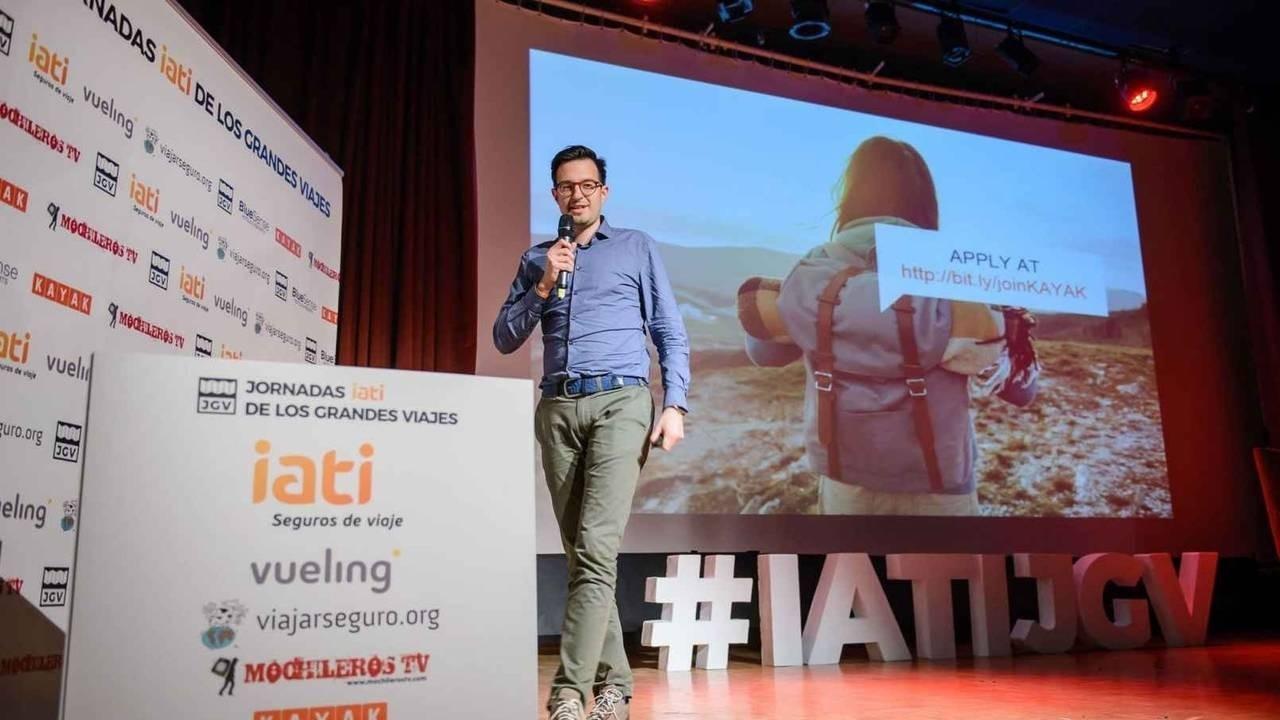“Simple things are complex enough” – how content can bring 170% ROI [Growth Talk with Heinz Grünwald]

In our series of Growth Talks, we’ll introduce experienced growth professionals, both from the Hypergrowth collective and part of our larger network of experts-on-demand.
And there’s no better start for a content series than talking with an experienced content marketer like Heinz Grünwald, who’s part of our Hypergrowth team. Heinz’s personal blogging career lasted just 12 blog posts. But he has created hundreds of content pieces that not only brought traffic but served as a powerful growth tool.
Building a social network before Friendster
 Heinz’s growth journey started off with product management. In 2001 he co-founded a social network built for the alumni of Junior Achievement:
Heinz’s growth journey started off with product management. In 2001 he co-founded a social network built for the alumni of Junior Achievement:
“Someone had to write the concept of this social network. So I basically wrote a hundred pages with no methodology – I just described what the programmers should do. And then I designed the whole flow, all the functionality and what each button does.”
Let’s set the stage. When Heinz was working on The High Potential Network, as they called the product, there was no Facebook, Twitter, or LinkedIn. Friendster was one year away and MySpace was farther away still.
This makes learning from other growth experts – something we take for granted today – close to impossible. “There weren’t that many people that could help you and if there were, we wouldn’t know them. We really didn’t know anything – no best-practice books, no blogs, there was no Twitter… it was completely different. The only way you got practical information was if there was anyone in the area in Vienna that we could reach out to,” says Heinz. Mentoring or even bouncing ideas off of peers was a very local affair.
The team learned through doing things and testing out. Their first successful growth hack came with Xing. “Our developer wrote a script that automatically visited all the other people’s profiles through our profiles. That drove nice organic traffic and awareness to our site. People were checking us out, as well, and we had nice organic signups as a result.” In time they got a call from Xing who were not very happy about their approach. And in my mind, if a company calls you up, you’ve really found a nice growth hack to exploit!
Getting 170% ROI on content… in 24 hours
Heinz discovered content as a strong marketing medium early on. He was in university when suffering from typical student boredom, he decided to start a blog. That didn’t really last, though. “My blogging career on my personal blog was exactly 12 blog posts,” he jokes.
One of these early blog posts contained a link to checkfelix, an Austrian travel search engine. This led the founder of the platform to contact Heinz and it all led to a content marketing job.
While at checkfelix in 2010, Heinz wrote an impressive 350 blog posts in a year and a half. But he didn’t really comprehend the full-scale results until 2016 when he returned to work with the company as an advisor. These content pieces were getting 1.7 million unique visitors a year!
This was a great testament that content marketing can bring results, but could it compete as a performance marketing tool? Heinz put this to the test as a Content Marketing Director for KAYAK, one of the largest travel search engines.
“The goal was to compete at the same level as PPC and other user acquisition channels. We measured return on ad spend in 24 hours for last-click attribution,” he explains. He first set off looking at what competitors. They “did things that were not explainable” like using Facebook as an organic distribution channel – a tactic that by 2016 was already old school and inefficient.
So Heinz devised a plan:
- The team would create minimal viral-like content with “semi-viral” headlines;
- These would be posted organically on Facebook and additionally boosted with ad campaigns. “We kept the social proof on the post and not distribute it across thousands of ads.” They’d be running 50-60 parallel ad campaigns promoting organic content to different audiences, all excluded from each other.
- In the blog posts, they would use a script that adds specific flight or hotel offers based on the article’s content (always related to something you could fly to or sleep in) and the reader’s location.
This simple plan brought massive traffic to the blog and achieved 170% ROI in a 24-hour window. “At one point we stopped looking at impressions and view-through conversions – the results were ridiculous,” Heinz laughs out when talking about the activity.
The plan used a mix of good content and ad budgets to strengthen the effects of that content. “To get the ROAS number up, you need to get organic distribution on top of the paid reach,” he says. It meant that the appeal of the content had to be high enough for the ads to work their magic. The main KPIs Heinz looked at to assess the appeal were shares and comments – they’d get 40 000 comments and a few hundred thousand shares every month!
The simplicity of the plan is deceiving, though. “The simple things are complex enough,” Heinz sums up and continues: “The execution of it was challenging and exhausting – getting the traffic right, creating the optimal blog UX, having the conversion elements tracked and analyzed in the right way, the headlines analyzed in the right way, finding the ideal content length…” Yeah, now that you list it all, it sounds challenging!
There were a lot of other things the team could work on, but didn’t. “We purely focused on this one thing. In hindsight, there were a lot of things you could optimize, but also a lot of things that would’ve distracted us, honestly,” he reminisces.
Teams and processes as growth levers

Based on his experience, I assumed Heinz would be biased towards content as a growth strategy. But he went in a completely different direction when I asked what are the key growth components. His answer had three components: alignment, process, and guts.
Growth is very holistic and that’s why you need the right people working together. “The best thing you can have is the right team that is educated, has the experience and an understanding of what growth really means.” Development, marketing, and product management need to be aligned and understand the same thing when they talk about growth. If they don’t work together, it all falls apart.
But even a great team would be crippled without a structured process. This includes a definition of a growth cycle and an experiment, a process for analyzing results and drawing conclusions.
The third element to Heinz’s recipe is an openness to try wild ideas. “Sometimes it starts with a silly thought in a brainstorming where everyone is laughing and thinking “Oh, we can’t do this!” But then when you get to the root of it and modify it a bit, you sometimes realize that this is actually a very good thing to try.”
Growth is holistic
Heinz’s personal journey has gone from product management through marketing to business development. His experience taught him that growth was a result of many interconnected elements. So it was no surprise that this is what he recommends growth practitioners to focus on:
“You need to analyze the business. You need to know is it mass market or niche, how large is the addressable market, what is the margin, how does the business generate profit. Then look at the dynamics in the growth channels you’ll be using at the moment when you’re actually using them.” In other words, we can’t recycle the same growth tactics that worked 3-4 years ago as the way people use these channels has shifted.
This big-picture thinking might mean that when a customer comes to you for a growth strategy, you’ll find out that they have razor-thin margins that don’t leave enough room for marketing spend. “Often I tell people stuff they don’t want to hear,” Heinz jokes. But in all seriousness, this is what a growth marketer worth their salt would do.







